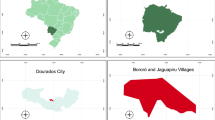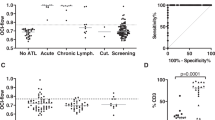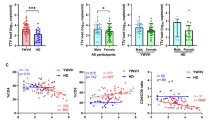Abstract
Human T-cell leukemia virus type I (HTLV-I) is a retrovirus that causes adult T-cell leukemia. The male-to-female transmission is stronger than the reverse, so the carrier proportion of women is greater than that of men. On the other hand, since the mother-to-child transmission route via the breast-feeding is common for baby boys and girls, it has been thought the HTLV-I proportions of boys and girls are the same until now. A question arises as to whether the "innate protection powers against human virus" are the same between baby boys and girls. We utilize Blood donors in 1995-1998, which were provided by Japan Red Cross Society of Oita, Japan. The data are summarized into the frequency table with respect to gender and age. The age groups are <20, 20<age≤30, 30<age≤40, 40<age≤50, and >50 years old. The comparison of carrier proportions of males and females under 20 years old is made with a two-sided statistical test and for the other groups one-sided tests are carried out. The preset statistical analysis shows that the carrier proportion of girls is less than that that of boys. It implies that in HTLV-I the mother-to-child transmission probability of females is less than that of males. According to the present findings, it follows that the female's innate protection power against HTLV-I is stronger than that of males, and the conclusion may become a valid proposition for general human virus.
Similar content being viewed by others
Article PDF
Author information
Authors and Affiliations
Corresponding author
Rights and permissions
About this article
Cite this article
Eshima, N., Tabata, M., Higuchi, Y. et al. Is the innate bio-protection power against human virus the same between males and females? A conclusion based on blood donor data of HTLV-I infection. Nat Prec (2008). https://doi.org/10.1038/npre.2008.1987.1
Received:
Accepted:
Published:
DOI: https://doi.org/10.1038/npre.2008.1987.1



